Rare Rides: The Original Audi 5000 From 1980

Before Audi revolutionized rallying and four-wheel drive cars with the Ur-Quattro circa 1980, the company made front-drive vehicles underpinned by Volkswagen platforms (some things never change). Today’s Rare Ride 5000 hails from the waning days of Audi’s front-drive era, not long before an all-new 5000 set the template for aerodynamic sedan design.
The car North America knew eventually as the 5000 was called the 100 by nearly every other market in the world. The 100’s first generation emerged under Auto Union ownership, shortly before that company’s consolidation into Audi. The model name signified the number of horsepower available in the small sedan and coupe. Based on the C1 platform, the 100 sold over 800,000 examples in a first generation that ran from 1969 through 1977. Toward the end, Audi was already experimenting with what would become Quattro; in 1976 the company produced a four-wheel drive prototype which never moved past the development stage.
A second-generation (C2) 100 entered production in 1976 and was the first instance of Audi offering an inline-five engine in its midsize sedan. No longer interested in making a coupe, the C2 generation was offered primarily in five-door liftback guise, as well as a standard four-door sedan. A short-lived two-door sedan appeared, too, but European customers proved uninterested and the model was quickly dropped.
A range of engines were made available across Europe, among them four- and five-cylinder models in naturally aspirated and turbo guise, in gasoline and diesel, and with displacement between 1.6 and 2.1 liters. Horsepower figures ranged between 84 and 134 in the 100 model. A few years into production, Audi expanded the 100 range into the 200. A top-of-the-line offering, the 200 appeared in 1979 and offered only five-cylinder engines, with and without turbocharging. The top trim 200 was a fuel-injected 2.1-liter with a turbocharger, producing a raucous 168 horsepower in a 2,500-pound sedan.
North American examples utilized only five-cylinder power, in gasoline and diesel varieties. A turbodiesel was not offered in the U.S., and the naturally aspirated diesel was only available with a manual transmission. Adding to Audi’s diesel woes (sound familiar?), the brand’s engines were not compliant with California emissions regulations, and thus were off-limits in that market. 1980 was the first time U.S. customers got their hands on the 5000 I5 turbo; a 200 to everyone else. Emissions changes to the engine meant horsepower totaled 130 on domestic shores.
Keeping the subject domestic, in the U.S. the 100 was an alternative sedan choice. Between 1976 and 1982 Audi shifted 133,512 cars in America, but nearly 1,000,000 globally. Within that timeline, top brass at Audi decided a name change was in order, and in 1978 the 100 became 5000. The company also started its climb toward luxury with the 5000, delivering over 90 percent of its cars in the U.S. with the upscale S equipment package.
The company came into its stride a couple years later when the aerodynamic C3 5000 launched for the 1983 model year with Quattro four-wheel drive.
Today’s recently-sold Rare Ride is a superb yellow and brown example from 1980, equipped with a naturally aspirated gasoline engine and an automatic transmission. With 57,000 miles and lots of tweed, it appropriately asked $5,000.
[Images: seller]

Interested in lots of cars and their various historical contexts. Started writing articles for TTAC in late 2016, when my first posts were QOTDs. From there I started a few new series like Rare Rides, Buy/Drive/Burn, Abandoned History, and most recently Rare Rides Icons. Operating from a home base in Cincinnati, Ohio, a relative auto journalist dead zone. Many of my articles are prompted by something I'll see on social media that sparks my interest and causes me to research. Finding articles and information from the early days of the internet and beyond that covers the little details lost to time: trim packages, color and wheel choices, interior fabrics. Beyond those, I'm fascinated by automotive industry experiments, both failures and successes. Lately I've taken an interest in AI, and generating "what if" type images for car models long dead. Reincarnating a modern Toyota Paseo, Lincoln Mark IX, or Isuzu Trooper through a text prompt is fun. Fun to post them on Twitter too, and watch people overreact. To that end, the social media I use most is Twitter, @CoreyLewis86. I also contribute pieces for Forbes Wheels and Forbes Home.
More by Corey Lewis
Latest Car Reviews
Read moreLatest Product Reviews
Read moreRecent Comments
- Tassos Under incompetent, affirmative action hire Mary Barra, GM has been shooting itself in the foot on a daily basis.Whether the Malibu cancellation has been one of these shootings is NOT obvious at all.GM should be run as a PROFITABLE BUSINESS and NOT as an outfit that satisfies everybody and his mother in law's pet preferences.IF the Malibu was UNPROFITABLE, it SHOULD be canceled.More generally, if its SEGMENT is Unprofitable, and HALF the makers cancel their midsize sedans, not only will it lead to the SURVIVAL OF THE FITTEST ones, but the survivors will obviously be more profitable if the LOSERS were kept being produced and the SMALL PIE of midsize sedans would yield slim pickings for every participant.SO NO, I APPROVE of the demise of the unprofitable Malibu, and hope Nissan does the same to the Altima, Hyundai with the SOnata, Mazda with the Mazda 6, and as many others as it takes to make the REMAINING players, like the Excellent, sporty Accord and the Bulletproof Reliable, cheap to maintain CAMRY, more profitable and affordable.
- GregLocock Car companies can only really sell cars that people who are new car buyers will pay a profitable price for. As it turns out fewer and fewer new car buyers want sedans. Large sedans can be nice to drive, certainly, but the number of new car buyers (the only ones that matter in this discussion) are prepared to sacrifice steering and handling for more obvious things like passenger and cargo space, or even some attempt at off roading. We know US new car buyers don't really care about handling because they fell for FWD in large cars.
- Slavuta Why is everybody sweating? Like sedans? - go buy one. Better - 2. Let CRV/RAV rust on the dealer lot. I have 3 sedans on the driveway. My neighbor - 2. Neighbors on each of our other side - 8 SUVs.
- Theflyersfan With sedans, especially, I wonder how many of those sales are to rental fleets. With the exception of the Civic and Accord, there are still rows of sedans mixed in with the RAV4s at every airport rental lot. I doubt the breakdown in sales is publicly published, so who knows... GM isn't out of the sedan business - Cadillac exists and I can't believe I'm typing this but they are actually decent - and I think they are making a huge mistake, especially if there's an extended oil price hike (cough...Iran...cough) and people want smaller and hybrids. But if one is only tied to the quarterly shareholder reports and not trends and the big picture, bad decisions like this get made.
- Wjtinfwb Not proud of what Stellantis is rolling out?



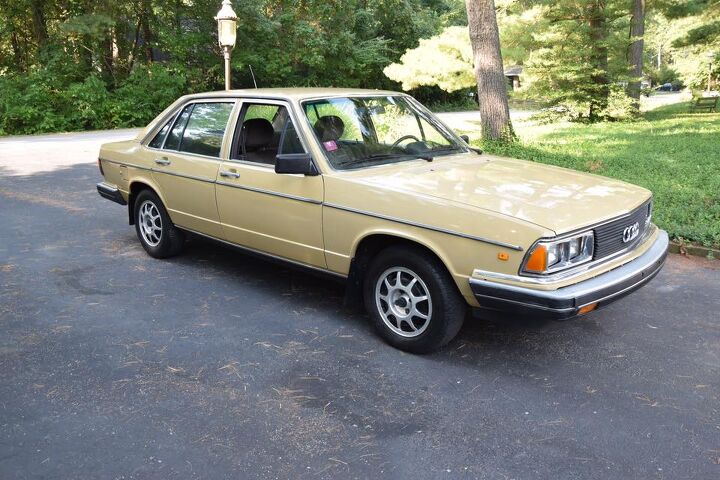






















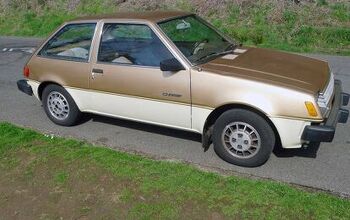

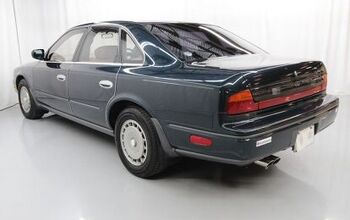
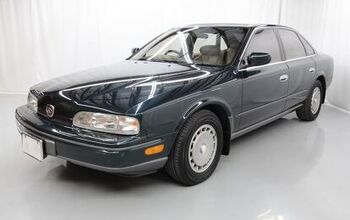
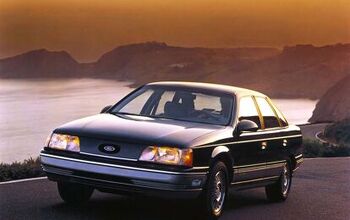







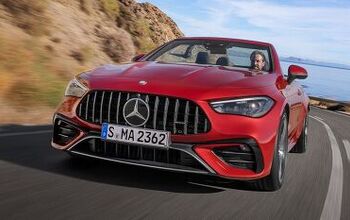


Comments
Join the conversation
these were nice cars 'during the day'. Kinda slow for all that dough. The turbo was credible--but it was overpriced for what it was (in 1980-81). Still, even at 4000 rpm, the car was smooth and quiet at 80. Door handles? I've had several VWs, no problem. But here's my issue with Audis in general: why are there used 1977-95 Audis so rare? Because owners love them? Probably not. Because owners didn't like them, or they were not worth fixing, or lemons? PROBABLY. More of these were sold than Rabbit GTIs. Yet I can find used Rabbit GTIs
I owned one. Not a world class car, more of a bigger Volkswagen. The silly 5 cylinder engine was just a 1.5l VW 4 with an extra cylinder added! Same cam, spacing, everything. Cheap ass crap! Still, I got on "huge" 215 width tires (front only), put shorter, cut down springs from a much heavier car in front, bolted the subframe directly to the car (it originally used rubber bushings), giving it some crazy cornering ability. Had no power though. It didn't help I was using Castrol 20w50 oil which eventually ruined the engine but I learned the hard way. Drove that thing in NYC, up and down the east coast, and then to San Francisco. Never let me down. It was wide enough to sleep across the back seat, almost comfortably! Bosch K Jetronic mechanical fuel injection was not responsive but was dead reliable. Unfortunately mine was an automatic. Never had any unusual issues with the door handles but I was the type that would be tightening things up or shimming something at the first sign something was loose. I know I had them off at some point. The color was "Dakota Beige". Great color. I was spraying some repairs once and asked someone watching if they wanted a tan (answer: NO). I also removed all the stupid black trim strips and filled the holes, giving it really clean custom look, plus mine was a 79 and it had the 4 round headlights with the weird silver plastic trim, which was really strange and unique and I liked it. Blacked out windows in back, sunroof (sometimes would drive through the park with someone standing up through the roof like a staff car!), had a lot of fun with that thing. If I took the front wheel of my mountain bike it would easily fit in the trunk! So much room in that thing. It was great in many ways.